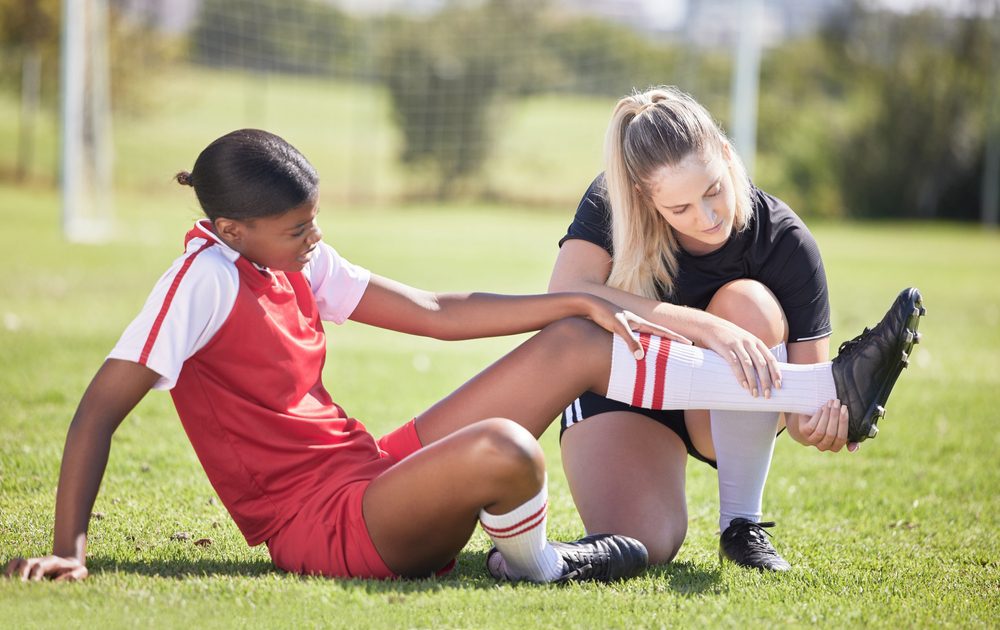An ankle injury is a common type of sports injury faced by soccer players, often sidelining athletes and affecting long-term performance. Quick movements, sudden changes in direction, and physical contact make the ankle vulnerable on the field. Understanding how to prevent this type of sports injury can help players stay active and reduce downtime. Here’s more information on how to prevent ankle injuries in soccer players:
Causes of Injuries
Soccer players can experience an ankle sports injury through several mechanisms. Here are some of them:
- Sudden pivoting movements while running create significant stress on ankle ligaments.
- Awkward landings after jumping for headers or making saves place excessive force on the ankle joint.
- Player collisions during tackles or other contact situations can twist the ankle beyond its normal range of motion.
- Weak supporting muscles around the ankle increase vulnerability to injuries since they fail to provide adequate stability.
- Poor field conditions, such as uneven surfaces or holes, contribute to accidental twists and sprains.
- Previous ankle injuries introduce weaknesses that heighten the likelihood of recurring injuries.
The ankle joint consists of bones, ligaments, and muscles working together to maintain stability and movement. When subjected to forces beyond their capacity, these structures become susceptible to damage.
Protective Gear and Technique
To promote safety and longevity in soccer, proper use of protective gear and adherence to correct techniques are fundamental. Injuries can often be prevented by selecting the right equipment and maintaining proper form during training and gameplay. Focusing on these aspects not only enhances performance but also reduces the risk of a sports injury.
Ankle Braces for Support
Ankle braces provide further support during soccer activities, particularly for players with previous injuries. Lace-up braces offer moderate support while allowing normal movement. Rigid braces provide maximum protection but may limit some ankle motion. Players should work with sports medicine professionals to select the appropriate type of brace for their needs.
Proper Footwear Selection
Proper footwear selection helps prevent athletic injury by providing adequate support and traction. Soccer cleats should fit properly without being too tight or loose. The cleat pattern should match the playing surface to prevent slipping. Replacing worn cleats maintains proper traction and reduces injury risk.
Proper Movement Patterns
Training using proper movement patterns reduces stress on the ankle joint during play. Players should learn to land with bent knees after jumping to absorb impact forces. Cutting and pivoting techniques should emphasize controlled movements rather than sudden, uncontrolled changes of direction. Coaches play a key role in teaching and reinforcing these fundamental movement skills.
By prioritizing the use of protective gear and emphasizing proper technique, athletes can maintain safety and performance. These proactive measures help reduce the likelihood of injuries and contribute to long-term physical resilience and athletic success. Implementing these practices consistently should be a foundational aspect of every player’s training regimen.
Recovery and Early Intervention
Pain, swelling, or stiffness after training sessions indicates potential issues. Players should not ignore these warning signs or try to play through pain. Rest and ice application can help manage acute ankle problems when they first appear. Players can apply ice for some minutes several times per day. Professional evaluation becomes necessary when ankle problems persist or worsen despite initial treatment. Sports medicine specialists can identify underlying issues and develop comprehensive treatment plans.
See a Sports Injury Specialist Today
Preventing ankle injuries in soccer requires a comprehensive approach that includes proper technique and early intervention when problems arise. Players who follow these guidelines significantly reduce their risk of experiencing serious ankle injuries that could sideline them for extended periods. If you are currently dealing with ankle pain or have concerns about your injury risk, schedule an appointment with a sports injury specialist to get personalized guidance for your needs.

